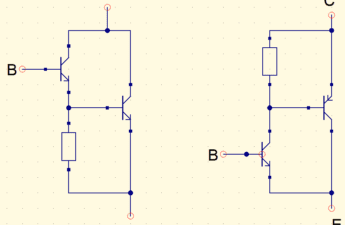The Darlington and Sziklai pairs are settings with BJT transistors. The comparison between both and some circuits are shown in this post.
Category: Analog electronics
Digital voltmeter ammeter: how to use it?
In this post, are shown how it works and how to use the digital voltmeter ammeter. The component I bought is the DE-2645-02.
Sawtooth generator circuit
This post shows how to design a sawtooth generator circuit, or ramp, which uses a current source and the integrated circuit 555.
Electret microphone: how does it work?
The electret microphone is very used in electronic projects, due to its low cost, size, good sensitivity, and mechanical resistance.
Meet the LM3915
The LM3915 is an integrated circuit that uses many operational amplifiers to measure voltage level or audio volume.
Circuit analysis with op-amp (Part 1)
This is the first part of a series of posts that show an analysis of practical circuits that use an operational amplifier (op-amp).
Operational amplifier: how does it work?
The operational amplifier, or op-amp, has great utility on electronics. In this post, it’s shown the operation of this integrated circuit (IC).
2 projects with LED effect
The two shown projects to make LED effect using the Johnson counter 4017.
Electrolytic capacitor: how it works?
Why does the electrolytic capacitor has polarity? Why there is a voltage limit? These and other questions are answered in this post.
MOSFET: how does it work?
The MOSFET is another type of field effect transistor. Much more used than JFET and it’s the most important component for digital computers.










